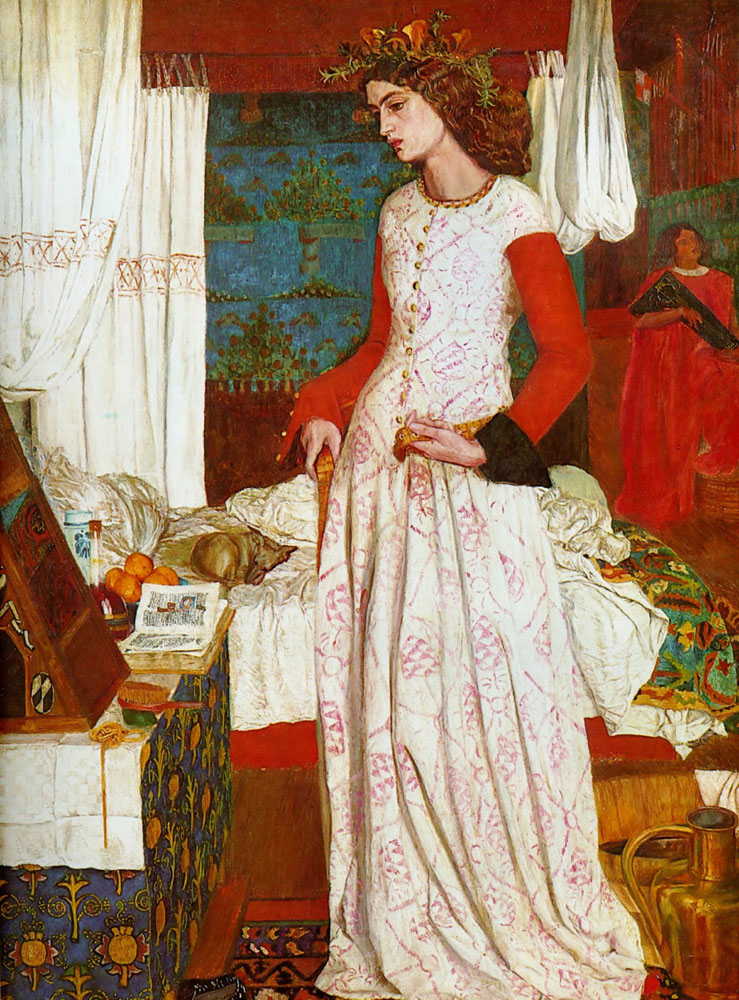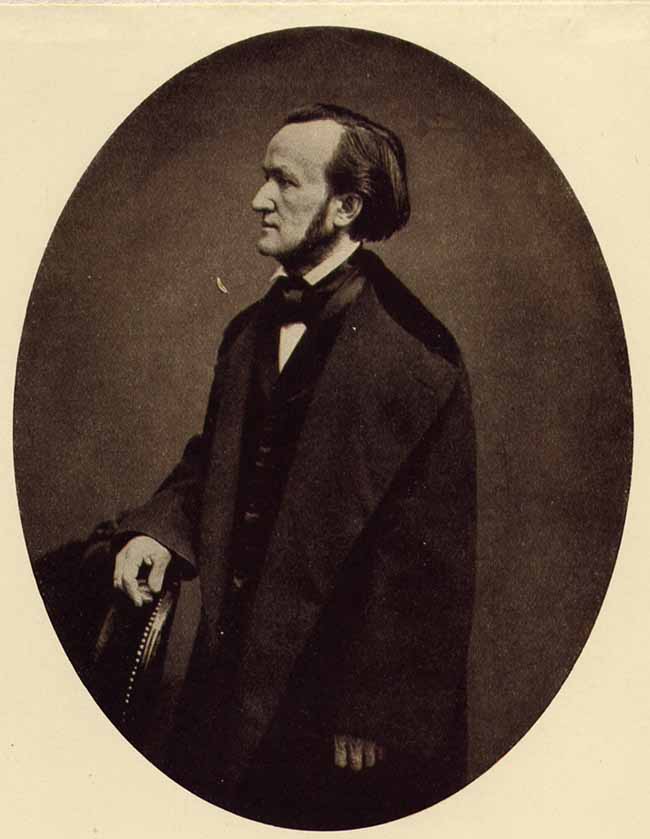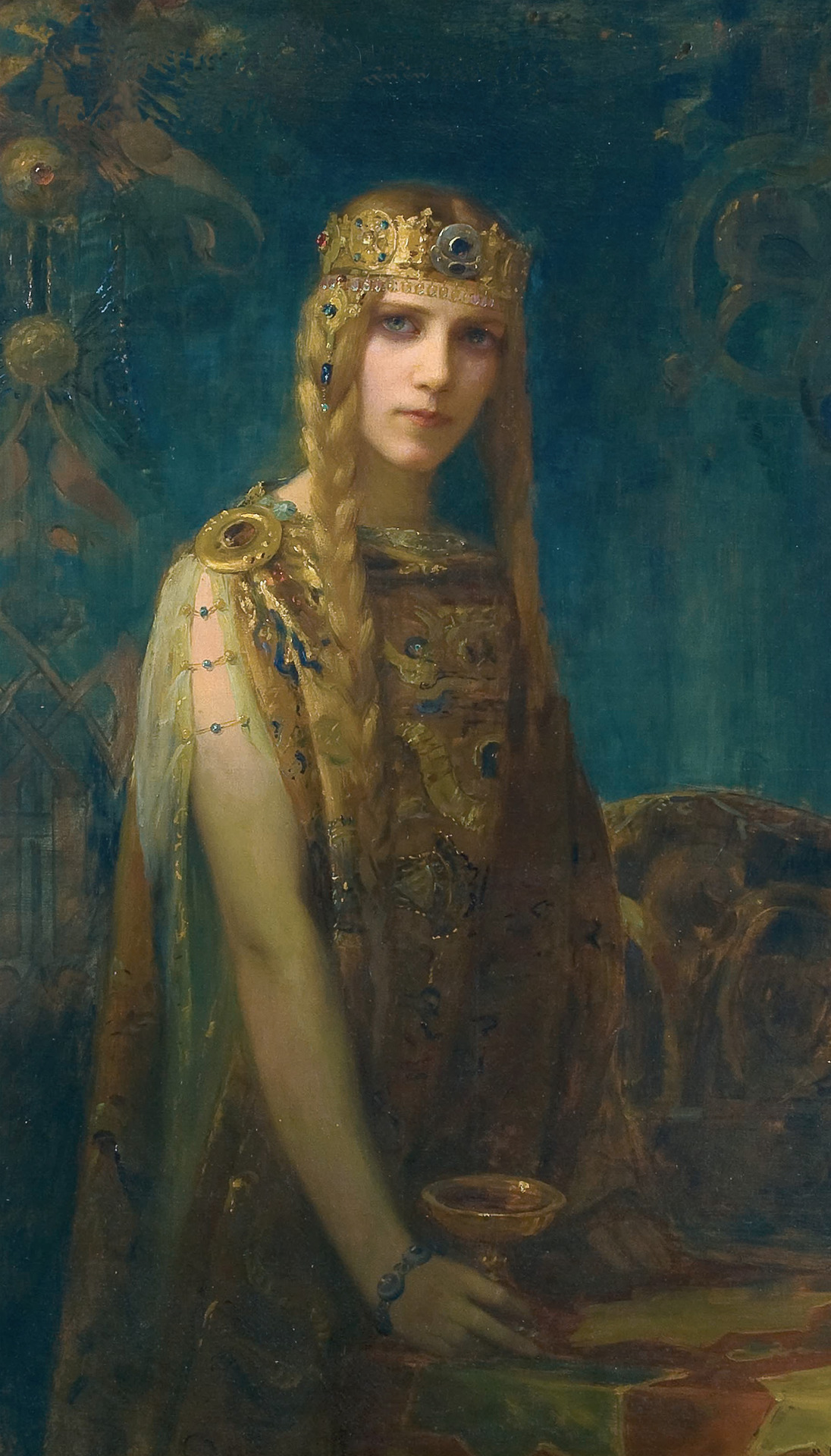|
Isolde
Iseult ( ), alternatively Isolde ( ) and other spellings, is the name of several characters in the legend of Tristan and Iseult. The most prominent is Iseult the Blonde, or Iseult of Ireland, the wife of Mark of Cornwall and the lover of Tristan. Her mother, the queen of Ireland, is also named Iseult. The third is Iseult of the White Hands, or Iseult of Brittany, the daughter of Hoel and the sister of Kahedin. Name Her name is variably given as most commonly either Iseult or Isolde, but also may appear as Yseult, Ysolt, Isolt, Isode, Isoude, Iseut, Isaut (Old French), Iosóid (Irish), Esyllt (Welsh), Ysella (Cornish), Isolda (Portuguese, Spanish), Izolda (Serbian) and Isotta (Italian), among other forms. The oldest source, Béroul's 12th-century romance, spells her name as ''Yseut'' or ''Iseut''. The etymology is uncertain, with most sources linking it to the Old High German words ''īs'' ("ice") and ''hiltja'' ("battle"). Other writers derive it from a Brythonic *''Adsiltia' ... [...More Info...] [...Related Items...] OR: [Wikipedia] [Google] [Baidu] |
Tristan Und Isolde
''Tristan und Isolde'' (''Tristan and Isolde''), WWV 90, is a music drama in three acts by Richard Wagner set to a German libretto by the composer, loosely based on the medieval 12th-century romance ''Tristan and Iseult'' by Gottfried von Strassburg. First conceived in 1854, the music was composed between 1857 and 1859 and premiered at the Königliches Hoftheater und Nationaltheater in Munich on 10 June 1865 with Hans von Bülow conducting. While performed by opera companies, Wagner preferred the term ''Handlung'' (German for "plot" or "action") for ''Tristan'' to distinguish its structure of continuous narrative flow (" endless melody") as distinct from that of conventional opera at the time which was constructed of mundane recitatives punctuated by showpiece arias, which Wagner had come to regard with great disdain. Wagner's composition of ''Tristan und Isolde'' was inspired in part by the philosophy of Arthur Schopenhauer, as well as by his relationship with his muse ... [...More Info...] [...Related Items...] OR: [Wikipedia] [Google] [Baidu] |
Tristan And Iseult
Tristan and Iseult, also known as Tristan and Isolde and other names, is a medieval chivalric romance told in numerous variations since the 12th century. Of disputed source, usually assumed to be primarily Celtic nations, Celtic, the tale is a tragedy about the illicit love between the Cornish people, Cornish knight Tristan and the Irish princess Iseult in the days of King Arthur. During Tristan's mission to escort Iseult from Ireland in the Middle Ages, Ireland to marry his uncle, King Mark of Cornwall, Tristan and Iseult ingest a love potion, instigating a forbidden love affair between them. The legend has had a lasting impact on Western culture. Its different versions exist in many European texts in various languages from the Middle Ages. The earliest instances take two primary forms: the so-called courtly and common branches, respectively associated with the 12th-century poems of Thomas of Britain and Béroul, the latter believed to reflect a now-lost original tale. A subse ... [...More Info...] [...Related Items...] OR: [Wikipedia] [Google] [Baidu] |
Gottfried Von Strassburg
Gottfried von Strassburg (died c. 1210) is the author of the Middle High German courtly romance ''Tristan'', an adaptation of the 12th-century ''Tristan and Iseult'' legend. Gottfried's work is regarded, alongside the '' Nibelungenlied'' and Wolfram von Eschenbach's ''Parzival'', as one of the great narrative masterpieces of the German Middle Ages. He is probably also the composer of a small number of surviving lyrics. His work became a source of inspiration for Richard Wagner's opera ''Tristan und Isolde'' (1865). Life Other than an origin in or close association with Strasbourg, nothing is known of his life. It would seem, however, that he was a man of good birth and position, who filled an important municipal office in his native city of Strasbourg, but since he is always referred to in German as ''Meister'' (master) and not ''Herr'' (sir), it seems safe to assume he was not a knight, a conclusion supported by the rather dismissive attitude toward knightly exploits shown in '' ... [...More Info...] [...Related Items...] OR: [Wikipedia] [Google] [Baidu] |
Richard Wagner
Wilhelm Richard Wagner ( ; ; 22 May 181313 February 1883) was a German composer, theatre director, essayist, and conductor who is chiefly known for his operas (or, as some of his mature works were later known, "music dramas"). Unlike most opera composers, Wagner wrote both the libretto and the music for each of his stage works. Initially establishing his reputation as a composer of works in the romantic vein of Carl Maria von Weber and Giacomo Meyerbeer, Wagner revolutionised opera through his concept of the ''Gesamtkunstwerk'' ("total work of art"), whereby he sought to synthesise the poetic, visual, musical and dramatic arts, with music subsidiary to drama. The drama was to be presented as a continuously sung narrative, without conventional operatic structures like Aria, arias and Recitative, recitatives. He described this vision in a List of prose works by Richard Wagner, series of essays published between 1849 and 1852. Wagner realised these ideas most fully in the first ... [...More Info...] [...Related Items...] OR: [Wikipedia] [Google] [Baidu] |
Tristan
Tristan (Latin/ Brythonic: ''Drustanus''; ; ), also known as Tristran or Tristram and similar names, is the folk hero of the legend of Tristan and Iseult. While escorting the Irish princess Iseult to wed Tristan's uncle, King Mark of Cornwall, Tristan and Iseult accidentally drink a love potion during the journey and fall in love, beginning an adulterous relationship that eventually leads to Tristan's banishment and death. The character's first recorded appearance is in the 12th-century poetic tellings initiated by Béroul and Thomas of Britain, which were eventually vastly expanded in the later tradition from the vast Prose ''Tristan''. In later versions of his story he is featured in Arthurian legend, including the seminal compilation ''Le Morte d'Arthur'', as a great Knight of the Round Table and friend of Lancelot. The historical roots of Tristan are unclear; his association with Cornwall may originate from the Tristan Stone, a 6th-century granite pillar in C ... [...More Info...] [...Related Items...] OR: [Wikipedia] [Google] [Baidu] |
Isolde - Illustration By Percy Anderson For Costume Fanciful, Historical And Theatrical, 1906
Iseult ( ), alternatively Isolde ( ) and other spellings, is the name of several characters in the legend of Tristan and Iseult. The most prominent is Iseult the Blonde, or Iseult of Ireland, the wife of Mark of Cornwall and the lover of Tristan. Her mother, the queen of Ireland, is also named Iseult. The third is Iseult of the White Hands, or Iseult of Brittany, the daughter of Hoel and the sister of Kahedin. Name Her name is variably given as most commonly either Iseult or Isolde, but also may appear as Yseult, Ysolt, Isolt, Isode, Isoude, Iseut, Isaut (Old French), Iosóid (Irish), Esyllt (Welsh), Ysella (Cornish), Isolda (Portuguese, Spanish), Izolda (Serbian) and Isotta (Italian), among other forms. The oldest source, Béroul's 12th-century romance, spells her name as ''Yseut'' or ''Iseut''. The etymology is uncertain, with most sources linking it to the Old High German words ''īs'' ("ice") and ''hiltja'' ("battle"). Other writers derive it from a Brythonic *''Adsilt ... [...More Info...] [...Related Items...] OR: [Wikipedia] [Google] [Baidu] |
Mark Of Cornwall
Mark of Cornwall (, , , ) was a sixth-century King of History of Cornwall, Kernow (Cornwall), possibly identical with King Conomor. As Mark or Marc (''Marc'h''), he is best known for his appearance in King Arthur, Arthurian legend as the uncle of Tristan and the husband of Iseult, who engages with Tristan in a secret liaison, giving Mark the epithet "Cuckold King". King Mark In Old Welsh records, Mark is recorded as "March son of Meirchion" of Kernow (Cornwall). He is associated with governing portions of Gwynedd and Glamorgan in Wales. The distance of these areas from modern day Cornwall may indicate that Mark was in fact a ruler of the eponymous Cornovii. Mark has been identified with Conomor, a king of Domnonea and Kernev (Domnonée and Cornouaille) in Armorica. In his ''Life of St. Paul Aurelian, Pol de Leon'', Wrmonoc of Landévennec refers to a "King Marc whose other name is Quonomorus". Also rendered as ''Cunomorus'', the name means "Hound-of-the-sea".Thomas, Charles ... [...More Info...] [...Related Items...] OR: [Wikipedia] [Google] [Baidu] |
King Mark
Mark of Cornwall (, , , ) was a sixth-century King of Kernow (Cornwall), possibly identical with King Conomor. As Mark or Marc (''Marc'h''), he is best known for his appearance in Arthurian legend as the uncle of Tristan and the husband of Iseult, who engages with Tristan in a secret liaison, giving Mark the epithet "Cuckold King". King Mark In Old Welsh records, Mark is recorded as "March son of Meirchion" of Kernow (Cornwall). He is associated with governing portions of Gwynedd and Glamorgan in Wales. The distance of these areas from modern day Cornwall may indicate that Mark was in fact a ruler of the eponymous Cornovii. Mark has been identified with Conomor, a king of Domnonea and Kernev (Domnonée and Cornouaille) in Armorica. In his ''Life of St. Pol de Leon'', Wrmonoc of Landévennec refers to a "King Marc whose other name is Quonomorus". Also rendered as ''Cunomorus'', the name means "Hound-of-the-sea".Thomas, Charles (1986). ''Celtic Britain''. London: Thames ... [...More Info...] [...Related Items...] OR: [Wikipedia] [Google] [Baidu] |
Chapelizod
Chapelizod () is a suburban village of Dublin, Ireland. It lies in the wooded valley of the River Liffey, near the Strawberry Beds and the Phoenix Park. The village is associated with Iseult of Ireland and the location of Iseult's chapel. Chapelizod is under the administration of Dublin City Council. Location The civil parish of Chapelizod is part of the barony of Castleknock. The parish consists of a single townland of the same name. However, 465 acres are within the walls of the Phoenix Park while the village proper, outside the walls, contains only 67 acres. It is the only parish of the barony that lies outside the territory of the modern county of Fingal. Chapelizod forms part of the local electoral area of Ballyfermot–Drimnagh within the Dublin City Council administrative area. History The origins of Chapelizod are obscure. There is evidence of Neolithic settlement between the southern ridge of the Phoenix Park and the Liffey and several burial mounds exist to the ... [...More Info...] [...Related Items...] OR: [Wikipedia] [Google] [Baidu] |
Love Potion
A love potion (''poculum amatorium'') is a magical liquid which supposedly causes the drinker to develop feelings of love towards the person who served it. Another common term to describe the potion, ''philtre'', is thought to have originated from the ancient Greek term ''philtron (love charm'), via the French word '' philtre''. The love potion motif occurs in literature, mainly in fairy tales, and in paintings, drama, music and mythology. In the Middle Ages, extracts from nightshades were used as hallucinogens, and to make supposed love potions and flying ointments. Such plants may have included belladonna, angel's trumpets, jimsonweed, black henbane, European scopolia or autumn mandrake, which contain alkaloids (atropine and scopolamine, which are hallucinogenic in higher doses) characterized by a narrow therapeutic index. Some attempts to create love potions have led to overdose or death where the preparations were not standardized for the content of potent c ... [...More Info...] [...Related Items...] OR: [Wikipedia] [Google] [Baidu] |
Cornwall
Cornwall (; or ) is a Ceremonial counties of England, ceremonial county in South West England. It is also one of the Celtic nations and the homeland of the Cornish people. The county is bordered by the Atlantic Ocean to the north and west, Devon to the east, and the English Channel to the south. The largest urban area is the Redruth and Camborne conurbation. The county is predominantly rural, with an area of and population of 568,210. After the Redruth-Camborne conurbation, the largest settlements are Falmouth, Cornwall, Falmouth, Penzance, Newquay, St Austell, and Truro. For Local government in England, local government purposes most of Cornwall is a Unitary authorities of England, unitary authority area, with the Isles of Scilly governed by a Council of the Isles of Scilly, unique local authority. The Cornish nationalism, Cornish nationalist movement disputes the constitutional status of Cornwall and seeks greater autonomy within the United Kingdom. Cornwall is the weste ... [...More Info...] [...Related Items...] OR: [Wikipedia] [Google] [Baidu] |
Morholt
The Knights of the Round Table (, , ) are the legendary knights of the fellowship of King Arthur that first appeared in the Matter of Britain literature in the mid-12th century. The Knights are a chivalric order dedicated to ensuring the peace of Arthur's kingdom following an early warring period, entrusted in later years to undergo a mystical quest for the Holy Grail. The Round Table at which they meet is a symbol of the equality of its members, who range from sovereign royals to minor nobles. The various Round Table stories present an assortment of knights from all over Great Britain and abroad, some of whom are even from outside of Europe. Their ranks often include Arthur's close and distant relatives, such as Agravain, Gaheris and Yvain, as well as his reconciled former enemies, like Galehaut, Pellinore and Lot. Several of the most notable Knights of the Round Table, among them Bedivere, Gawain and Kay, are based on older characters from a host of great warriors associa ... [...More Info...] [...Related Items...] OR: [Wikipedia] [Google] [Baidu] |











